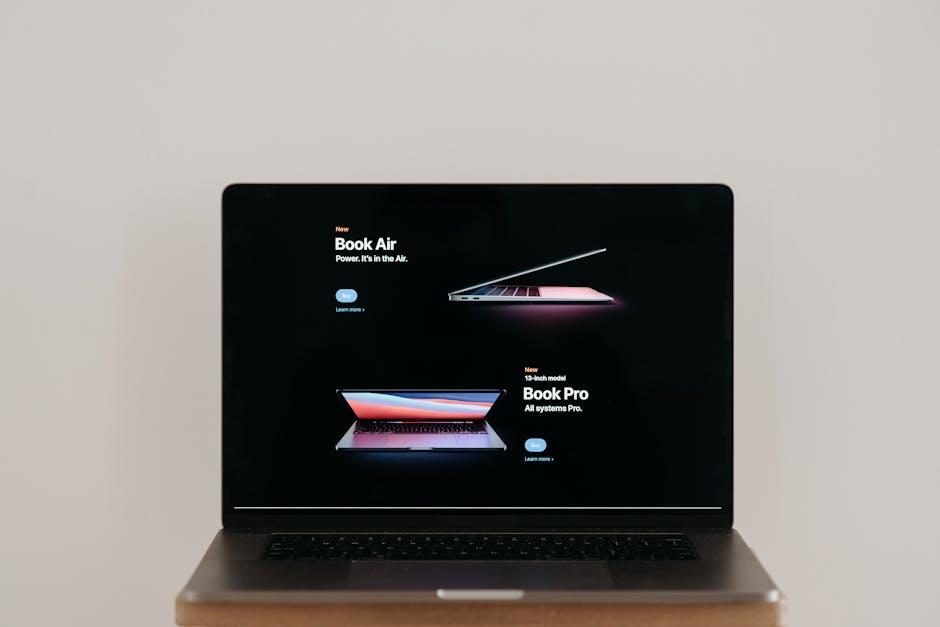In today’s digital age, our inboxes can often feel like a battleground, with unwanted emails flooding in from various senders. Whether it’s promotional offers that we didn’t sign up for or persistent spam that clutters our communication space, these distractions can hinder our productivity. Luckily, Apple’s Mail app provides a straightforward solution to take back control of your email experience. In this article, we’ll guide you through the steps to easily block unwanted email senders, ensuring your inbox remains clear, focused, and only populated with messages that truly matter to you. Say goodbye to the noise and hello to a more organized digital life!
Streamlining Your Inbox: Understanding the Importance of Email Filtering
Email filtering is an essential tool in managing your digital communications effectively. With the average American adult receiving upwards of 120 emails per day, sifting through this barrage can feel overwhelming. Implementing filters not only declutters your inbox but also enhances your overall productivity. Here’s why mastering email filtering is crucial:
- Save Time: By automatically sorting emails into designated folders, you can quickly focus on important messages. This allows you to spend less time searching for relevant emails.
- Reduce Stress: A cluttered inbox can lead to anxiety. Filtering helps create a cleaner, more organized space, making it easier to manage your correspondence.
- Improve Focus: When irrelevant emails are filtered out, you can concentrate on tasks and communication that truly matter, leading to better efficiency.
- Enhance Security: Filtering reduces the chances of phishing attempts and spam cluttering your inbox, protecting your personal and financial information.
In the Mac Mail app, you can set up powerful filters that automatically redirect unwanted emails to your Junk folder or specific folders based on sender, subject, or content. Here’s how:
- Open the Mail app and go to Mail > Preferences.
- Navigate to the Rules tab.
- Click Add Rule and specify your criteria (e.g., sender address or keywords).
- Choose the action (e.g., move to Junk, delete, or mark as read).
By creating customized filtering rules, you not only streamline your inbox but also ensure that communications from financial institutions like Bank of America or Wells Fargo are prioritized, while potential spam from unsolicited sources is minimized.
| Sender Type | Action |
|---|---|
| Financial Institutions | Move to “Financial” folder |
| Promotional Offers | Move to “Offers” folder |
| Spam and Junk | Move to Junk folder |
By effectively employing these strategies, you can create a tailored email environment that works for you, significantly enhancing your overall email experience. Adapt your filters regularly to cope with changing needs and keep your inbox under control.

Identifying Unwanted Senders: Tips for Spotting Spam and Irrelevant Emails
Identifying unwanted senders can save you time and protect your inbox from spam and irrelevant emails. Follow these tips to spot potential threats and maintain a clutter-free email experience:
- Check the Email Address: Look closely at the sender’s email address. Often, spammers use variations of legitimate addresses to trick you. For example, an email from “bank-xyz@fake.com” instead of “customer.service@bank-xyz.com” should raise a red flag.
- Look for Generic Greetings: Many spam emails start with generic greetings like “Dear Customer” rather than your name. This can indicate that the sender doesn’t have any previous interaction with you.
- Beware of Urgency and Threats: Spam messages often create a sense of urgency, claiming immediate action is required. Phrases like “Your account will be suspended” or “Act now to claim your prize” are common tactics used to compel you to click links.
- Examine Links Carefully: Before clicking on any links, hover over them to check the URL. If the link doesn’t match the sender’s website, or if it appears suspicious (e.g., using unusual characters), do not click it.
- Watch for Attachments: Unexpected email attachments can contain malware or other harmful software. If you aren’t expecting an attachment, it’s safer to delete the email without opening it.
- Review Your Spam Folder: Familiarize yourself with your spam filters and frequently check your spam folder. Sometimes, important emails can be incorrectly filtered. Adjust your settings if necessary.
| Indicator | What to Look For |
|---|---|
| Sender’s Address | Unusual or misspelled domains |
| Greeting | Generic or no greeting |
| Urgency | Threats or urgent requests |
| Links | Mismatched URLs |
| Attachments | Unexpected attachments |
By staying vigilant and leveraging these tips, you can successfully identify and block unwanted email senders, ensuring your inbox remains a safe and efficient workspace.

Setting Up Block Lists: Step-by-Step Guide to Eliminating Distractions
If you’re tired of unwanted emails cluttering your inbox, setting up block lists in your Mac Mail app is a straightforward way to reclaim your inbox and boost your productivity. Follow these steps to efficiently eliminate distractions:
- Open the Mac Mail App: Launch the Mail application on your Mac, which can usually be found in your Applications folder or dock.
- Access Preferences: Click on “Mail” in the menu bar at the top of your screen, then select “Preferences.” This will open a new window where you can customize your settings.
- Select the Junk Mail Tab: Within the Preferences window, navigate to the “Junk Mail” tab. Here, you can find options to help filter unwanted emails.
- Enable Junk Mail Filtering: Make sure the box for “Enable junk mail filtering” is checked. This allows Mac Mail to automatically sort suspicious emails into a designated junk folder.
- Set Up a Block List: To add email addresses or domains to your block list, select the “Rules” tab. Here, you can create specific conditions to block unwanted emails.
To create a rule:
- Click on “Add Rule.”
- Name your rule for easy identification.
- Set the criteria, such as “If any of the following conditions are met,” and choose “From” as the condition.
- Enter the unwanted email address or domain you wish to block. For example: unwanted@example.com or *.example.com to block all emails from that domain.
- Select “Move Message” and choose “Junk” or “Trash” to automatically direct these emails away from your inbox.
After setting up your block list:
- Save Your Changes: Click “OK” to save your new rule and return to the main Preferences window.
- Test the Rule: Send a test email from a blocked address to ensure your rule is working as intended.
- Adjust as Necessary: Regularly review and adjust your block list to keep it updated with new unwanted senders.
By utilizing these settings, you can create a more focused email experience, reducing distractions significantly. With a little bit of time invested in customizing your preferences, you’ll enjoy a cleaner, more manageable inbox.

Enhancing Your Email Experience: Best Practices for Managing Future Communications
To enhance your email experience and manage future communications effectively, it’s important to incorporate best practices that streamline your inbox and minimize distractions. Here are several strategies to consider:
- Implement Folders and Labels: Organizing your emails into specific folders or utilizing labels can help you quickly locate important messages. For instance, you can create categories like “Banking,” “Insurance,” or “Loans”.
- Utilize Rules and Filters: Set up rules to automatically sort incoming emails from certain senders, such as your bank or insurance provider, into designated folders, ensuring you don’t miss critical updates.
- Unsubscribe from Unwanted Newsletters: Regularly evaluate subscriptions and opt-out of those that are not adding value to your life. Most legitimate companies will have an unsubscribe option at the bottom of their emails.
- Set Designated Email Times: Instead of constantly checking your email, allocate specific times during the day to review and respond. This can greatly improve your focus and productivity.
- Keep Your Inbox Clean: Make it a habit to delete or archive emails that you no longer need. Consider using a “one touch” rule where you deal with each email as soon as you open it.
- Mark Important Emails: Use flags or stars for emails that require immediate attention, which will help prioritize what to address first.
- Leverage Email Management Software: Look into email management tools that integrate with Mac Mail to provide additional features for organizing and managing emails, such as Help Scout or Smartsheet’s solutions.
- Focus on Security: Be mindful of phishing scams and always verify the sender’s address, especially when it comes to financial institutions. Legitimate emails from your bank or credit provider should have professional formatting and correct links.
| Email Category | Suggested Action |
|---|---|
| Bank Statements | Move to designated “Banking” folder |
| Insurance Updates | Flag for review |
| Loan Notifications | Set rules to categorize |
| Promotional Offers | Unsubscribe if not interested |
By adopting these practices, you can create a more efficient and enjoyable email environment, ensuring that your communications are not only manageable but also meaningful. Taking proactive steps in managing your inbox will allow you to stay organized and focused, particularly when it comes to important financial matters related to your bank, loan, or insurance communications.

Concluding Remarks
In conclusion, taking control of your inbox is not only achievable but essential for a clutter-free digital life. By utilizing the blocking features in your Mac Mail app, you can effectively bid farewell to unwanted senders and reclaim your focus. Remember, every click on the “Block” button is a step toward a more organized and peaceful email experience. So, don’t hesitate-take charge of your communication today. With these tools at your disposal, you can transform your email interactions from overwhelming to seamlessly manageable. Happy emailing!














